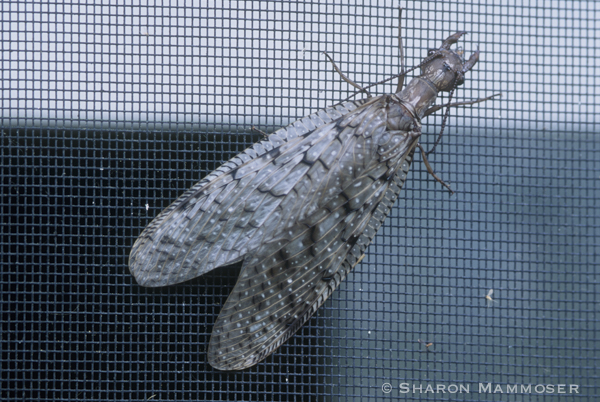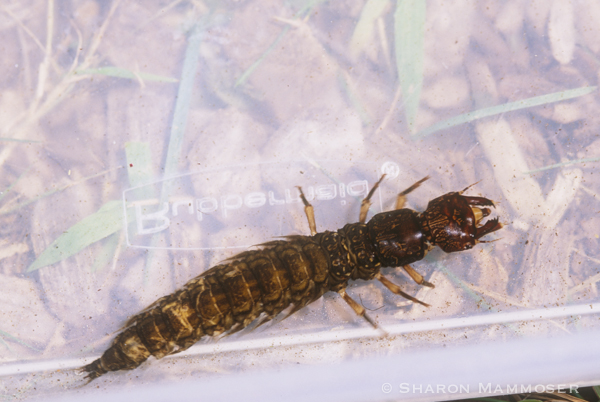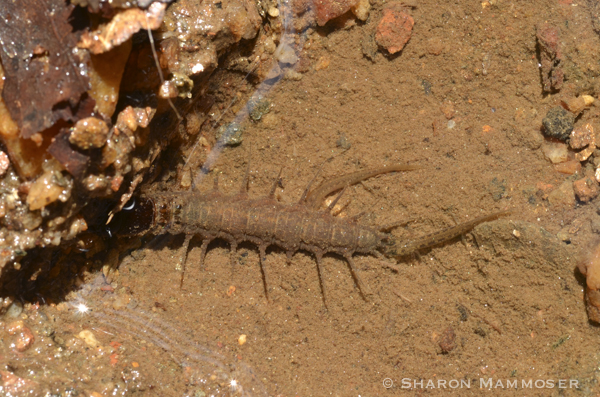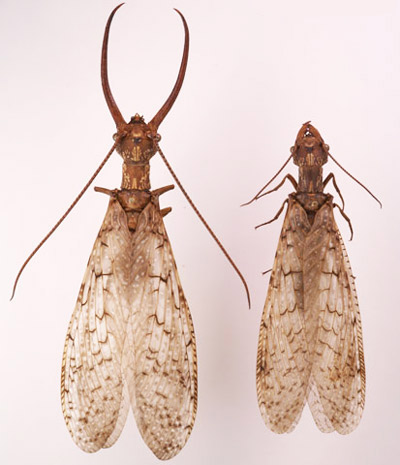
Have you seen this insect from last week’s puzzler? Are you a fisherman?
If so, you may be more familiar with the nymphs of these giant insects than the adults. Known as hellgrammites, they, like the adults, can get to be quite big and are pretty intimidating-looking when you find them. As larvae they hide under rocks in unpolluted streams or rivers, searching out soft-bodied invertebrates that they can feed on. They go through 10-12 molts before transforming into winged adults. Depending on the species, they may live in the water for 1-3 years. They are prized bait for many fisherman… though caution is advised since they can deliver a wicked bite with their strong jaws.

Hellgrammite adults are called DOBSONFLIES. When it is time to pupate, they leave the water and find a suitable spot under a rock, log or other protective structure. There they spend 1-14 days in the soil before shedding their exoskeleton to become a pupa. They will remain in this stage for 7-14 days. Interestingly the emergence of adult dobsonflies in a given area is synchronous –and often comes immediately after a thunderstorm. This is sometimes called “hellgrammite crawling” It is thought that the vibrations stimulate the emergence.

As winged adults, they are often attracted to lights at night. As adults they live only a few days, males shorter than females. Males live only 3 days while females might live as many as 10. In this short time, they do not eat, but simply seek mates. Females lay their eggs on the surfaces over water–such as tree leaves or bridges. When the eggs hatch the nymphs fall to the water and start the first stage of their lives.
Check out the photos below– the male is on the left. Look at those jaws! Yikes! They can inspire fear in even the strongest nature-lover!– but they do not use these to bite people, they use them to hold onto their mates and when jousting with rival males. In fact, you are safe to hold a male dobsonfly as they cannot bite! Females on the other hand can inflict a painful bite if handled incorrectly or if the female feels threatened. Maybe best just to leave them alone if you see them!

Click HERE to check out the next puzzler!


1 thought on “Weekly Puzzler Answer #119”
Comments are closed.